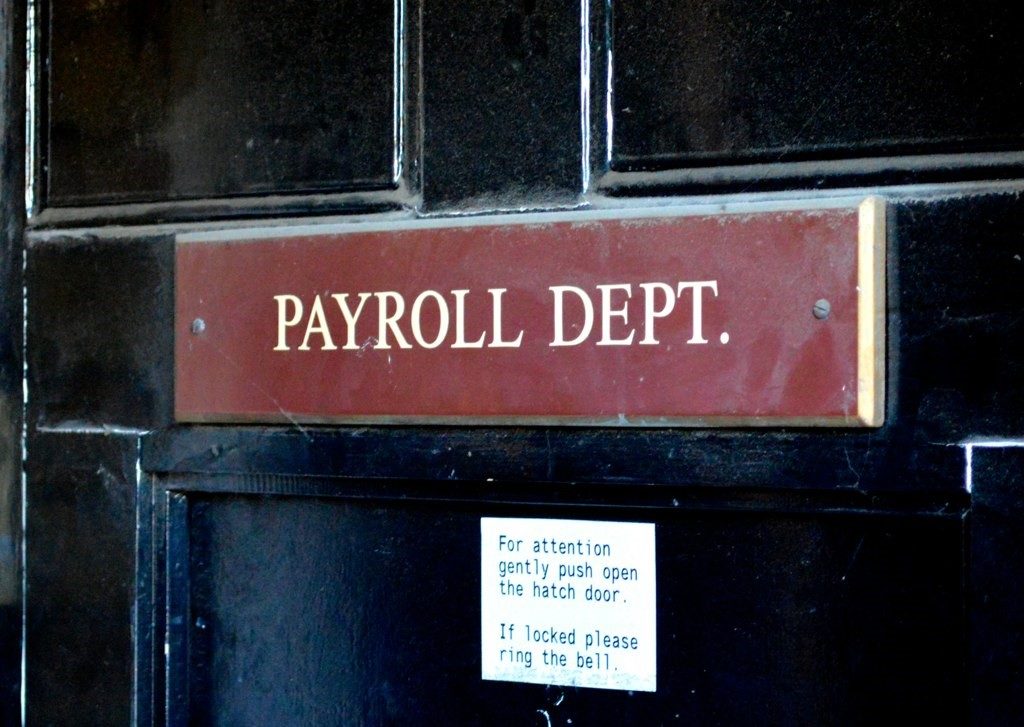Image Credit: Matt Brown at Flickr
In this post, we will identify the top five challenges for both small and large businesses when it comes to running payroll. Then we will walk through some tactics to mitigate or even eliminate the stress.
#5 “Making Payroll”
Making payroll means having enough cash on hand. It is always a business owner’s challenge, especially when it comes to paying your hard-working employees.
Managing your cash flow intelligently, with respect to running payroll, will mitigate your stress. If you have recently received funding or you have cash-flow positive months, set up a dedicated bank account. Use it to fund your payroll bank account. Set it up with enough cash to last a few months. In addition, don’t forget to account for payroll taxes.
Lastly, talk to your business banker regarding a line of credit or overdraft protection on your dedicated payroll account. This will serve as your safety net. It will ensure that you never miss a check date for your employees.
#4 Calendar Alerts for Your Paydays
Processing payroll always tends to sneak up on us. Or we simply try to avoid it. However, the inevitable day does come.
Calendaring every period with double alerts is the first step in never missing a pay date. Most payroll companies require payroll submission at least 2 days prior to check date. However, it could be a longer lead time if you are a startup and you are dealing with a smaller payroll company.
If you have a simple payroll, consider setting your payroll on autopilot. This means that your payroll will automatically be done for you.
RELATED ARTICLE: 4 WAYS TO MAKE YOUR EMPLOYEES HAPPIER AND HEALTHIER
#3 Messing with Your Payroll Taxes
Many employers still try to file their own payroll taxes. Sometimes, this is because they would rather hold onto their money instead of having it pulled out with their employees’ pay.
Unfortunately, those employers might not understand the significance of withholding the pay and employee taxes. According to the IRS, however, “Employers who fail to comply with employment tax law will be subject to criminal and civil sanctions.”
The IRS has made it easier to file through the Electronic Federal Tax Payment System (EFTPS). However, it is simply not worth the angst and added stress.
Therefore, let the experts handle your payroll tax filing for you. By experts, we mean a quality, audited, and bonded payroll company. In other words, don’t just turn this responsibility over to your bookkeeper or your accountant.
#2 Poor Time-Labor Management
Time-labor management is by far the most time-consuming component of running payroll. This is especially the case for employers who have a large seasonal workforce with employees who are paid by the hour. These employers must comply with the Affordable Care Act (ACA).
Capturing your employees’ hours is critical to ensuring accurate payment to your employees. What’s more, it also helps you to comply with wage and overtime laws as well as ACA requirements.
How does one go about capturing an employee’s time? In the past, many employers used good old-fashioned punch clocks. As a matter of fact, some employers still rely on punch clocks. But as practical as these time clocks are, especially in manufacturing environments, there are much better ways to capture your employees’ time.
More and more companies are moving toward an electronic time clock. The best of these devices have the capability of integrating with the payroll system. Others create a file that can be imported into the payroll system.
Businesses that have used electronic systems successfully include restaurants, where employees often clock in via the point-of-sale system (POS). On the one hand, it is great that the employer is able to efficiently capture employees’ time. On the other hand, it is difficult to automatically sync that time over to the payroll system.
Avoid the stress by implementing a payroll system that integrates the POS system with a time-labor management system. Alternatively, opt for a system that has the ability to import the time easily into your payroll grid.
This will be more efficient for you. What’s more, it will allow employees to punch in and out from their computer, mobile app, or from a physical time clock. Every employee’s time will be captured in real time and pulled into the payroll period.
#1 No Backup Plan or Person
All too often, entrepreneurs and founders focus intently on building the business. This often requires them to spend a good deal of time out of the office.
The last thing you need is to worry about running payroll when you have to be out of the office. Therefore, it’s a good idea to set up one or two additional users whom you trust to handle this for you. Your bookkeeper, CPA, or even your spouse all are great pinch hitters when it comes to running payroll.
Typically, the business owner or founder eventually outgrows the role of payroll processor. So why not put the plan in place early and rehearse it with your team prior to heading out on the road? This simple exercise will provide you with peace of mind that your employees will get paid on time.
About the Author
Paul Aemisegeo is the founder and CEO of PayrollMart. He works with employers and entrepreneurs to help them with all things pertaining to their employees. PayrollMart specializes in the areas of payroll, employee benefits, workers’ compensation, and retirement plans.

